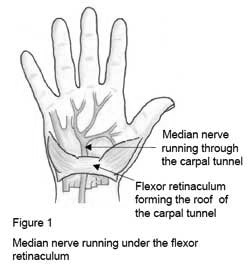Carpal tunnel syndrome is a condition where there is increased pressure on the nerve that crosses the front of your wrist (the median nerve). The median nerve runs through a tight tunnel, together with the tendons that bend your fingers.

X-rays. Most causes of compression of the ulnar nerve cannot be seen on an x-ray however a plain radiograph may highlight the presence of a bony spur or arthritis within the elbow joint.
These tests can determine how well the nerve is functioning and help identify where it is being compressed.
NSAID’s, Injections and Orthotics
Your doctor may recommend surgery if:
During a cubital tunnel release the ulnar nerve is isolated and protected and the roof of the tunnel is divided in order to release the pressure on the nerve, .Cubital tunnel release tends to work best when the nerve compression is mild and the nerve does not slide out from behind the bony ridge of the medial epicondyle when the elbow is bent.
Ulnar nerve anterior transposition
The nerve can also be moved from its place behind the medial epicondyle to a new place in front of it. This is called an anterior transposition of the ulnar nerve. The nerve can be moved to lie under the skin and fat but on top of the muscle (subcutaneous transposition), within the muscle (intermuscular transposition) or under the muscle (submuscular transposition). Moving the nerve to the front of the medial epicondyle prevents it from getting caught on the bony ridge and stretching when you bend your elbow.
Depending on the type of surgery you have, you may need to wear a splint for a few weeks after the operation. A submuscular transposition usually requires a longer time (3 to 6 weeks) in a splint.